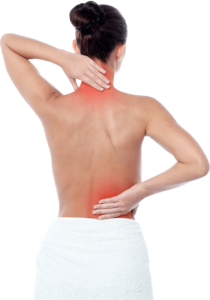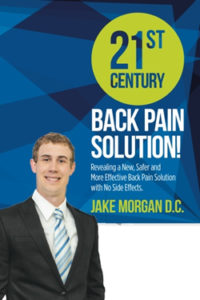 Make An Appointment
Make An Appointment
What Is Degenerative Disc Disease?
What Is Degenerative Disc Disease?
Symptoms usually include dull ache or pain traveling across the lower back, stiffness, and catching sensation in lower back. Upper back or neck degenerative disc disease can happen in any region of your spine. Degenerative disc is a condition in which the disc or cushion between your vertebrae start to break down, usually having been damaged at some point in your life. As they wear out they can create abnormal movement in the spine and send abnormal signals to the supporting muscles, leading to muscle imbalance, dysfunction, and pain.
These changes are more likely to occur in people who do heavy physical work, such as repeated heavy lifting. A previous sudden (acute) injury, such as a fall, leading to a herniated disc might also begin the degeneration process. Those old injuries you might have not given a second thought to sometimes come back to haunt you.
Some studies correlate a genetic relationship to degenerative changes, so be sure and thank your parents if you have this condition. As the space between the vertebrae gets smaller, there is less padding between them, which creates bone on bone and the spine becomes less stable. The body reacts to this by constructing bony growths, called “bone spurs” (osteophytes). Bone spurs can put pressure on the spinal nerves or spinal cord, resulting in pain and affecting nerve function.
If degenerative changes in the bones occur in your upper back, you might develop a slumped or hunched appearance of your back. We have all seen men or women who have humped appearance, loss of height, and permanent postural abnormalities. This might be where we get the term “little old lady.” If this has occurred, you are in advanced stages of degenerative disc disease and need to take action now to prevent further postural changes. If someone in your family—a mother, father, or grandparent—has this, it is possible you have a genetic predisposition for the same condition.
SUCCESS CASE STUDY
Tim is a 70-year-old retired geologist. He was diagnosed in 1999 with degenerative disc in his lower back. He says he had occasional back pain but had always been able to work through it, until one day while playing golf he had tremendous lower back pain that was unrelenting for three weeks. He took high levels of pain killers and muscle relaxers with no relief. Hunched over and using a walker, he lunged onto my examination table. X-rays showed he had Stage 3 degenerative disc disease (DDD) at L4-L5 and L5-S1. After physical examination it was clear he also had severe muscle imbalances in his hip flexor muscles and lower back musculature. He said his number-one goal was to return to the golf course and that he would do anything it took to get back to swinging a golf club. Our treatment consisted of computerized lumbar decompression therapy, lower back joint realignments, a heavy dose of muscle balancing therapy, and electrical stimulation treatment. After four weeks he was 80-percent improved. He is now back on the course, and once a month he comes in for a tune-up treatment. He reminds me he can still shoot his age.
Effective Treatment for Degenerative Disc Disease
Computerized lumbar decompression therapy • Joint realignment, which allows decreased pressure on the disc • Muscle balance treatments • Core exercises to strengthen the muscles that support that joint • Natural anti-inflammatory such as Boswellia, turmeric, and hot packs for temporary relief • Electrical stimulation • Lumbar braces with the goal of reducing pressure on disc • Self care in the form of stretching, lower back exercises, and ergonomic modifications
Just like Tim, we can help you to become pain free! Call today to schedule your appointment and lets get you back to being pain free again!
Tell the receptionist that you would like to come in for the New Patient Special!
Jake Morgan DC
325-695-9355
Don’t forget to download your very own copy my latest book 21st Century Back Pain Solution!
